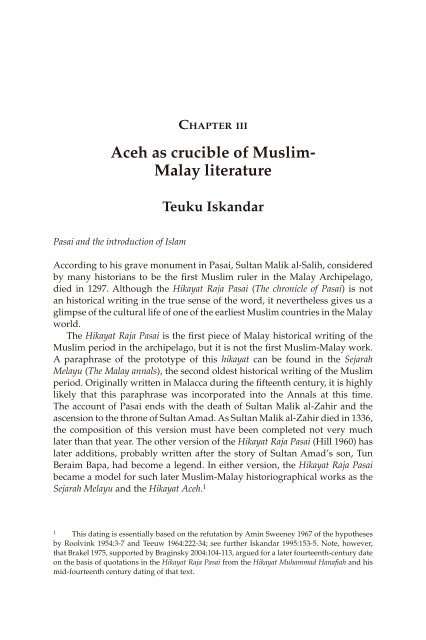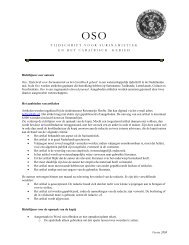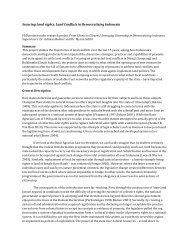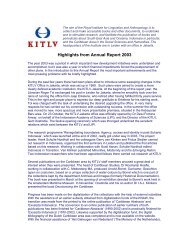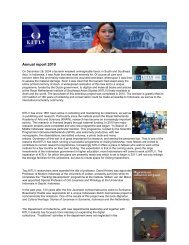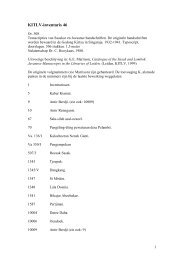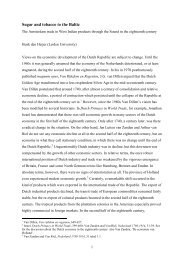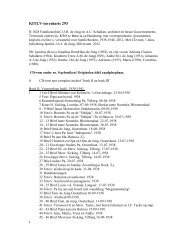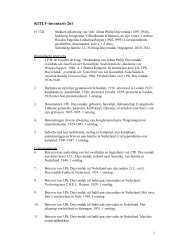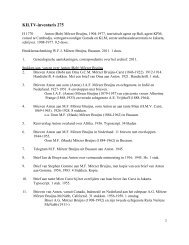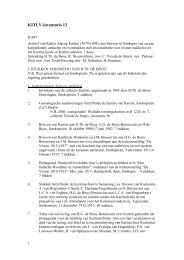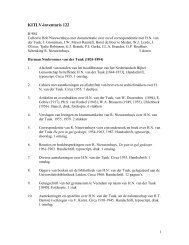The Acehnese past and its present state of study R. Michael ... - kitlv
The Acehnese past and its present state of study R. Michael ... - kitlv
The Acehnese past and its present state of study R. Michael ... - kitlv
Create successful ePaper yourself
Turn your PDF publications into a flip-book with our unique Google optimized e-Paper software.
CHAPTER III<br />
Aceh as crucible <strong>of</strong> Muslim-<br />
Malay literature<br />
Pasai <strong>and</strong> the introduction <strong>of</strong> Islam<br />
Teuku Isk<strong>and</strong>ar<br />
According to his grave monument in Pasai, Sultan Malik al-Salih, considered<br />
by many historians to be the fi rst Muslim ruler in the Malay Archipelago,<br />
died in 1297. Although the Hikayat Raja Pasai (<strong>The</strong> chronicle <strong>of</strong> Pasai) is not<br />
an historical writing in the true sense <strong>of</strong> the word, it nevertheless gives us a<br />
glimpse <strong>of</strong> the cultural life <strong>of</strong> one <strong>of</strong> the earliest Muslim countries in the Malay<br />
world.<br />
<strong>The</strong> Hikayat Raja Pasai is the fi rst piece <strong>of</strong> Malay historical writing <strong>of</strong> the<br />
Muslim period in the archipelago, but it is not the fi rst Muslim-Malay work.<br />
A paraphrase <strong>of</strong> the prototype <strong>of</strong> this hikayat can be found in the Sejarah<br />
Melayu (<strong>The</strong> Malay annals), the second oldest historical writing <strong>of</strong> the Muslim<br />
period. Originally written in Malacca during the fi fteenth century, it is highly<br />
likely that this paraphrase was incorporated into the Annals at this time.<br />
<strong>The</strong> account <strong>of</strong> Pasai ends with the death <strong>of</strong> Sultan Malik al-Zahir <strong>and</strong> the<br />
ascension to the throne <strong>of</strong> Sultan Amad. As Sultan Malik al-Zahir died in 1336,<br />
the composition <strong>of</strong> this version must have been completed not very much<br />
later than that year. <strong>The</strong> other version <strong>of</strong> the Hikayat Raja Pasai (Hill 1960) has<br />
later additions, probably written after the story <strong>of</strong> Sultan Amad’s son, Tun<br />
Beraim Bapa, had become a legend. In either version, the Hikayat Raja Pasai<br />
became a model for such later Muslim-Malay historiographical works as the<br />
Sejarah Melayu <strong>and</strong> the Hikayat Aceh. 1<br />
1 This dating is essentially based on the refutation by Amin Sweeney 1967 <strong>of</strong> the hypotheses<br />
by Roolvink 1954:3-7 <strong>and</strong> Teeuw 1964:222-34; see further Isk<strong>and</strong>ar 1995:153-5. Note, however,<br />
that Brakel 1975, supported by Braginsky 2004:104-113, argued for a later fourteenth-century date<br />
on the basis <strong>of</strong> quotations in the Hikayat Raja Pasai from the Hikayat Muhammad Hanafi ah <strong>and</strong> his<br />
mid-fourteenth century dating <strong>of</strong> that text.


